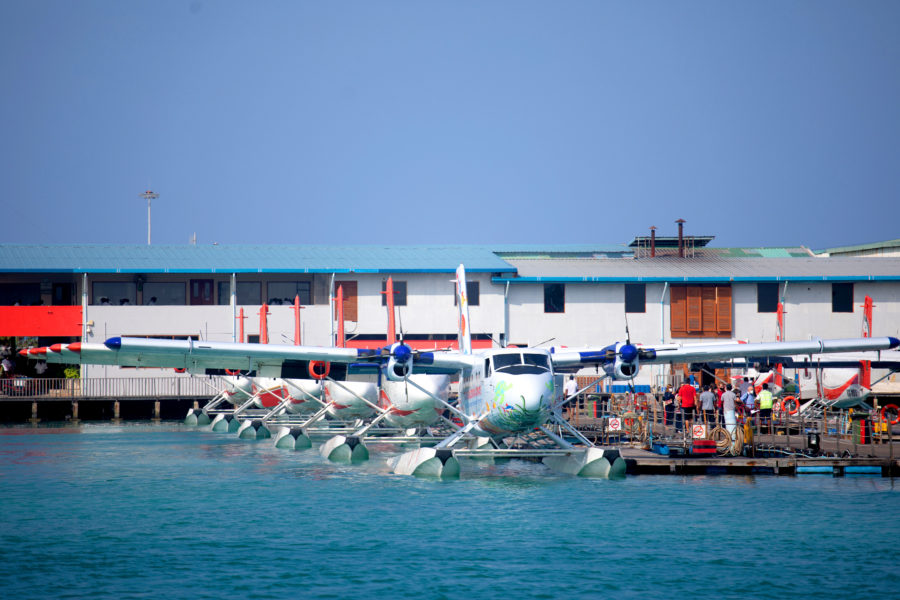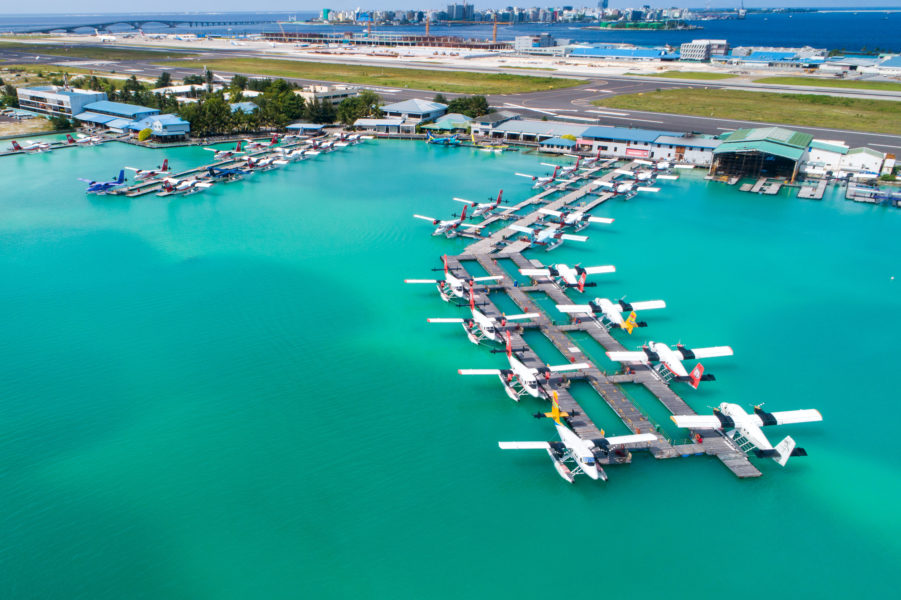
History
In the 1970s, the Maldives as a destination was struggling with infrastructure problems. Adventurous travellers would visit the Maldives only to explore islands in close proximity to Male’. The first resorts in Maldives opened in 1972 and the transfer was through speedboat. After the emergence of the first resorts, the idea of more convenient and faster travel options was being pitched. TMA began in 1989 as Hummingbird Island Helicopters, a firm that operated a helicopter fleet. The first air transfer service to resorts began in 1989. However, there were many major infrastructure issues in Maldives which made it difficult to fully establish and transition to helicopter air service.
Lars Erik Nielsen travelled to Kuredu and realized how sick the passengers were getting due to the voyage. He understood the need for a more convenient air travel. He started Maldivian Air Taxi (MAT) with only two aircrafts in 1993. This was a transformative milestone in Maldivian history that changed Maldivian tourism for good. The company grew over the years where now over a million passengers are transferred every year.
In 1997, with the succession of seaplane operations, Hummingbird Island Airways introduced seaplane services and was later renamed Hummingbird Island Airways. The transition to a seaplane-only fleet was completed in 1999 and another year later, the name was changed to Trans Maldivian Airways (TMA).
In February 2013, MAT and TMA partnered with Blackstone, one of the world’s leading investment and advisory firms under the name Trans Maldivian Airways (Pvt) Limited (TMA). In December 2017, the company was acquired by Bain Capital Private Equity, a global private equity firm headquartered out of the US, in association with Tempus Group, a Chinese tourism-focused conglomerate, from the current shareholders led by Blackstone.
The Maldivian tourism industry owes credit to TMA for providing seamless connectivity to resorts and providing expert care for tourists who use their service. Now, sitting at the top of the game, TMA is considered the backbone of the tourism infrastructure in the Maldives.

Present Day
TMA is presently owned by a consortium led by Carlyle Group along with Kingstreet Capital Management and Davidson Kempner Capital Management. The company sits comfortably at the intersection of Tourism & Aviation, having made significant contributions to both industries. TMA is currently nearing a fleet of 60 aircraft and currently operates to over 80 resorts across 14 atolls.
More than 300 TMA flights take to the Maldivian skies every single day, totalling to more than 100,000 trips per year. Close to a million passengers are transported every year further solidifying Trans Maldivian’s pivotal role in the Maldivian Tourism Industry. The success of the Maldivian tourism industry can be greatly attributed to TMA’s dedication to providing safe air travel- connecting resorts all over the country.

What’s Next?
TMA is now geared up to move to the new seaplane terminal, a state-of-the-art project carried out by the Maldivian government. The New Seaplane Terminal is poised to increase the overall efficiency of the seaplane operations. Also, with numerous resorts establishing lounges at this new terminal, it will further elevate the overall service being offered to the guests who travel to the island nation from across the world and choose seaplanes as their preferred mode of transfer
In the long term, the Maldivian tourism industry is arguably on a trajectory of immense growth, especially after the pandemic. As tourist arrivals and the number of new resorts grow over time, TMA aims to continuously evolve and improve its services to cater for the increased demand.






